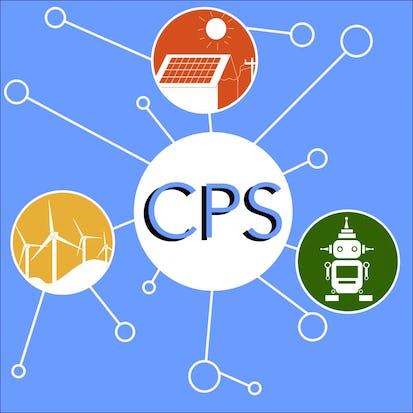- Level Professional
- المدة 13 ساعات hours
- الطبع بواسطة University of California, Santa Cruz
-
Offered by

عن
Cyber-physical systems (CPS for short) combine digital and analog devices, interfaces, networks, computer systems, and the like, with the natural and man-made physical world. The inherent interconnected and heterogeneous combination of behaviors in these systems makes their analysis and design an exciting and challenging task. CPS: Modeling and Simulation provides you with an introduction to modeling and simulation of cyber-physical systems. The main focus is on models of physical process, finite state machines, computation, converters between physical and cyber variables, and digital networks. The instructor of this course is Ricardo Sanfelice (https://hybrid.soe.ucsc.edu), Associate Professor in the Department of Computer Engineering at the University of California Santa Cruz.الوحدات
Basic Modeling Concepts: Discrete-time and Continuous-Time Systems
1
Assignment
- Quiz #1
1
Peer Review
- Homework #1
1
Discussions
- MATLAB and Simulink Support
15
Videos
- Welcome to the Course
- Introduction
- Overview
- Modeling Cyber-Physical Systems
- Discrete-Time Systems Concepts (Part 1)
- Discrete-Time Systems Concepts (Part 2)
- A Discrete-Time Model of a Ground Vehicle
- Simulation of a Discrete-Time Model of a Ground Vehicle
- Continuous-Time Concepts (Part 1)
- A Continuous-Time Model of a Ground Vehicle
- Simulation of a Continuous-Time Model of a Ground Vehicle
- Continuous-Time Concepts (Part 2)
- A Continuous-Time Model of a Linear Time-Invariant System
- A Continuous-Time Model of the Temperature in a Room
- Simulation of the Temperature in a Room
1
Readings
- Using MATLAB and Simulink
Modeling Cyber Components: Finite State Machines, Computations, Algorithms, and a First CPS Model
1
Assignment
- Quiz #2
1
Peer Review
- Homework #2
12
Videos
- Finite-State Machines (Part 1)
- Finite-State Machines (Part 2)
- Finite-State Machines (Part 3)
- Simulation of a Finite State Machine
- A Finite-State Machine for Controlling the Temperature in a Room
- Simulation of a Finite State Machine to Control the Temperature of a Room
- A Finite State Machine Modeling a Chess Game
- A Cyber-Physical System Model of a Thermostat (Part 1)
- A Cyber-Physical System Model of a Thermostat (Part 2)
- Simulation of a Cyber-Physical System Model of a Thermostat
- Models of Computations
- A General Discrete-Time Model of a Linear Time-Invariant Algorithm
Modeling Interfaces for Cyber-Physical Systems: Conversion, Networks, and Complete CPS Models
1
Assignment
- Quiz #3
1
Peer Review
- Homework #3
13
Videos
- Analog to Digital Conversion
- A Model of an Analog to Digital Converter
- Digital to Analog Conversion
- A Model of a Digital to Analog Converter
- Simulation of an Analog to Digital Converter
- A Model of an Implemented Finite-State Machine
- Simulation of an Implemented Finite State Machine
- A Digital Communication Network
- Simulation of a Digital Communication Network
- A Cyber-Physical System Model for Estimation Over a Network
- Simulation of a Cyber-Physical System Model for Estimation Over a Network
- A Cyber-Physical System Model for Sample and Hold Control
- Simulation of a Cyber-Physical System Model for Sample and Hold Control
Trajectories in CPS and Simulations: Time Domains, Executions, and Complete CPS Models
1
Assignment
- Quiz #4
1
Peer Review
- Homework #4
10
Videos
- Introduction to Executions (or Solutions) to Cyber-Physical Systems
- Hybrid Time Domains
- Hybrid Arcs
- Definition of an Execution (without Inputs)
- Definition of an Execution (with Inputs)
- Types of Executions
- Executions for the Digital to Analog Converter
- Simulations of Cyber-Physical Systems
- Introduction to Hybrid Equations Toolbox (Part 1)
- Introduction to Hybrid Equations Toolbox (Part 2)
Conclusion
1
Videos
- Course Conclusion
Auto Summary
Dive into the world of Cyber-Physical Systems with this course focused on modeling and simulation. Led by Associate Professor Ricardo Sanfelice from UC Santa Cruz, this professional-level program covers physical processes, finite state machines, computation, and more. Offered by Coursera, the engaging content spans 780 minutes and is available through a Starter subscription. Ideal for science and engineering enthusiasts aiming to master complex system analysis and design.

Ricardo Sanfelice

